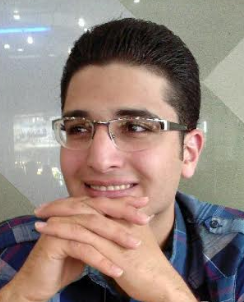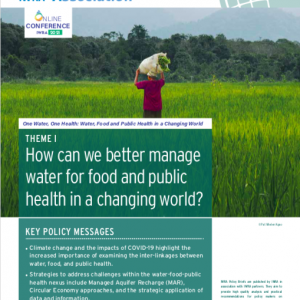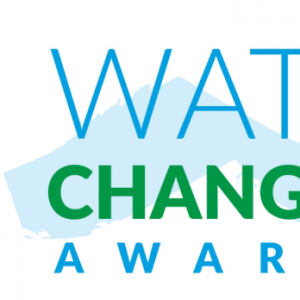Shervin Hasemi, 1st World Summit on LNOB Contest Winner

IWRA in collaboration with WaterLex, helped organise the 1st World Summit on Leaving No One Behind that took place in Geneva in February 2019. You can read more about his event later in this newsletter. Here is an interview with the winner of the contest held during this summit:
1. Please tell us about yourself.
I am Shervin Hashemi, currently living in Seoul, Republic of Korea. I work in the Department of Civil and Environmental Engineering, at Seoul National University as a postdoctoral fellow. My field of interest is water and sanitation management. I recently won the 1st World Summit on Leaving No One Behind (LNOB) Contest for my flagship project on developing the Self-Sustaining Resource Circulated Sanitation (SSRCS) system to meet the demands of people living in remote and rural areas who lack adequate access to sustainable sanitation.
2. How did you learn about the 1st World Summit on LNOB competition and why is this achievement so important?
I received the call for abstracts for the 1st World Summit on LNOB and the invitation to submit my proposal via email from IWRA’s Executive Office on September 21st, 2018, which was also my birthday! I have checked the information and found the event to be very relevant to my work. In contrast with most of the conferences on water and sanitation topics, which usually focus on technical and scientific aspects, the summit was seeking practical solutions which that take a human rights based approaches. I believe that implementing such projects can be a noteworthy step towards achieving SDG6.
3. What do you think about UN-Water’s theme of LNOB for this year and what does it mean for you?
According to SDG6, adequate access to sustainable water and sanitation for all has to be ensured by 2030. However, according to the current estimates by the Joint Monitoring Program for Water Supply and Sanitation (JMP), around 4.5 billion people currently do not have access to safely managed sanitation. This means that they are currently left behind! Most of these people are living in remote or rural areas. The UN-Water theme for 2019 is clear: Leaving No One Behind! This theme can encourage everyone to focus their efforts to provide a solution for this global challenge. For me, as a civil and environmental engineer, this theme means that providing practical solutions based on science and engineering is not enough. To be successful, deeper consideration is required of the social and economic aspects of solutions to ensure that they are acceptable and affordable for those that need them.
4. How will your project help address some of the water challenges affecting the people most left behind?
This project is useful for overcoming human right challenges by preventing water and wastewater problems, by providing economic benefits to cover maintenance costs, and by making a comfortable and self-regulating sanitation system. From this work, we can find a science-based, policy-driven sanitation solution to achieve the SDG6, including the LNOB concept. The SSRCS system ensures human rights because it provides sustainability accessible adequate sanitation, without any risk of open defecation and sexual harassment. The self-sustaining process ensures water and sanitation rights without the need for external water, energy, and maintenance costs. Using a dry sanitation system can help solve water problems. The harvested rainwater from the roof can be used for hand washing and other hygienic proposes, with the produced grey water being available for irrigation purposes after onsite treatments. Accordingly, since it does not use water, it does not create sanitary wastewater or associated water pollution problems. Minimum energy for ventilation, lighting, and an emergency alarm can be provided by solar panels and wind turbines. Maintenance costs can be covered by increased crop production using fertilizer from the treated sanitation products. Setting up a local sanitation committee can create ownership and social responsibility by making decisions for regulating maintenance.
As for the other criteria of concern for human rights: Availability can be ensured by involving local human resources and materials in construction and maintenance; accessibility can be ensured by installing the system at a place near to the users; the sanitation committee will be responsible to make the system clean and free to use; water quality is not a problembecause this dry system neither uses water nor creates wastewater; affordability can be ensured because there will be no fee for water and energy; and the benefits of producing fertilizer and agricultural products can cover the maintenance costs. Acceptability can be ensured following the long tradition of using human waste as fertilizer in some countries such Vietnam and Korea. Some shortcomings such as smell, parasites, and optimization of fertility can be solved by training and science-based practices.
5. What next steps are required to continue with your project?
One SSRCS system set will be constructed using local labour and materials at an agriculture-based rural area in Vietnam using the fund provided by WaterLex. A matching fund will also be provided by Seoul National University (SNU). The exact location will be decided in consultation with our Vietnamese partners taking into consideration accessibility. A feasibility and sustainability study will be made for one year after the construction of the SSRCS system by the SNU team. Public and cultural acceptance of the system will be monitored. Economic analysis will be made by observing the increase in agricultural production. Technically, fertility characteristics of the final products will be checked. A local sanitation committee will be formed to maintain the system, and to overcome as tatic challenges like odour and to create a sense of ownership. Several visits for construction, monitoring, and education of local people will be made by the SNU team to make sure that nobody in the community suffers because of this project. The scientific and social results will be presented at relevant conferences and papers will be published. Blog writing and interviews for the general public will be made. Furthermore, accountability will be ensured by making a contract between the local government and SNU. The progress will be reported in several global water events, such as High-Level Panels on Water (HLPW), the World Water Forum (WWF) and World Water Week (WWW), UN-Water annual campaigns, and of course IWRA’s XVII World Water Congress next year in Daegu, Korea.
6. What does IWRA mean to you?
First of all, I should mention that I was introduced and found out about IWRA thanks to Ignacio Deregibus. It was during the 2017 Korean International Water Week (KIWW2017) in Gyeongju, Korea. That event was very memorable because our team won the Excellent Award of the 2017 World Water Challenge (WWCH) by proposing SSRCS for providing sustainable sanitation in the Kingdom of Bhutan. After checking out IWRA online, I figured out that it is a non-profit organization and a non-governmental organization, with the purpose of improving the management of water resources. It also provides a professional network of water experts, which facilitates global knowledge sharing of water resources information across disciplines and geographies. IWRA also plays an important role in enhancing education and knowledge sharing for water resource management through events like “World Water Congress”, publications like Water International, and networking opportunities. Becoming a member of IWRA is really useful for me professionally. Our team also wishes to invite IWRA members to collaborate with us in our SSRCS project.



